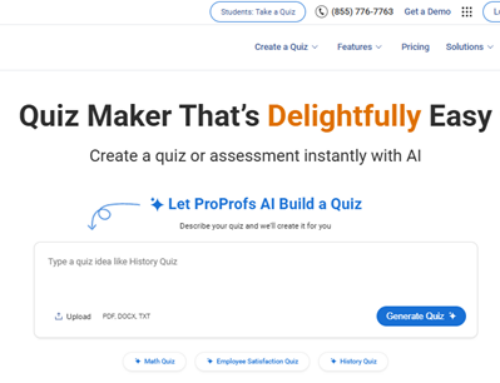Creating High-Performing SEO Content in 2025
With the passage of time, search engines like Google have become increasingly sophisticated. Today, creating relevant, unique, and valuable information alone isn’t enough to achieve top visibility in the search engine results pages (SERP). Your content also needs to be carefully optimized to align with the latest search engine algorithms and ranking factors. This process is known as content optimization, and it’s a vital part of crafting effective SEO content.
Across the web, you’ll find a variety of beginner and advanced guides on how to optimize your content. However, to simplify the process, we’ve compiled and explained some of the most effective, up-to-date strategies that you can implement right away to boost your content’s visibility and performance.
Effective Tips & Tricks to Optimize Content for Increased SERP Visibility
To create truly impactful SEO content, here are a few proven techniques that should be followed:
🔑 Incorporate Keywords Strategically
Even in 2025, keywords remain at the heart of effective SEO content. These are the exact terms people type into search engines when looking for information. For instance, if someone searches for “best motherboards for gaming,” that phrase becomes a highly targeted keyword.
To create optimized SEO content, you need to strategically integrate high-intent, relevant keywords into key parts of your page—such as the title, headers, meta description, and the first paragraph. But balance is essential. Keyword stuffing can hurt your rankings, while natural placement enhances readability and improves relevance.
Now, the situation is clear: to maximize your content’s reach, you must include relevant and high-volume keywords. Use reliable tools like SEMrush to discover keyword suggestions based on your niche and target region. It provides data-driven lists of keywords with valuable insights into search volume, difficulty, and trends.
But a word of caution: Don’t overload your content with too many keywords in pursuit of higher rankings. Focus on placing them where they make sense and sound natural to the reader.
📖 Optimize SEO Content for Readability & Clarity
Even the most keyword-rich SEO content will underperform if readers find it hard to understand. Poor readability increases bounce rates and sends negative signals to search engines, affecting your page’s visibility.
To improve readability:
-
Identify and simplify complex words or technical jargon
-
Replace them with easy-to-understand synonyms
-
Shorten long sentences or restructure them for better flow
If this sounds time-consuming, use the Text Paraphraser to quickly rephrase and enhance fluency without losing the original meaning.
Readable, well-structured SEO content keeps users engaged longer, which in turn improves your chances of ranking higher on Google.
✂️ Remove Fluff & Redundant Content
Sometimes, your SEO content might tick all the boxes—keywords, formatting, visuals—but still fail to perform. Why? Because it may contain fluff, redundant phrases, or repetitive ideas, which are considered thin content by search engines.
To solve this, do a complete review of your content and remove unnecessary sentences or paragraphs. Streamline the message so every word adds value.
To speed up the process, you can use Text Summarizer. It will condense your content to its most essential points in seconds, helping you maintain clarity and focus.
Concise, informative SEO content is more likely to be indexed favorably and show up in higher positions in the SERPs.
📐 Ensure Proper Format & Structure
A clean and logical structure is just as important as the content itself. Well-formatted SEO content is easier for both users and search engine bots to understand and navigate.
Key formatting tips:
-
Keep paragraphs short (3–4 sentences)
-
Use bullet points or numbered lists for key info
-
Use proper heading tags (H1 for the title, H2 for sections, and so on)
-
Maintain heading hierarchy (avoid jumping from H2 to H4, etc.)
Note: Google often pulls structured information from bullet points or lists into featured snippets. Structuring your SEO content correctly increases your chances of earning that spot.
🔗 Add Links & Visuals to Enrich SEO Content
Internal and external linking boosts the credibility and structure of your SEO content:
-
Internal links help users explore related pages within your site, improving dwell time and navigation.
-
External links connect to authoritative third-party sources, building trust with both users and search engines.
Just make sure that your external sources are trustworthy and high-authority; otherwise, they can damage your ranking rather than improve it.
Also, add visuals—images, infographics, videos, or charts—to make your SEO content visually engaging. Tools like Canva make it easy to design custom visuals that align with your brand and message.
Well-placed visuals improve user experience, lower bounce rates, and increase the likelihood that users will share or link to your content.

- Optimize On-page Elements:
Last but not least, while optimizing content for better rankings, you also need to work on different On-page elements.
Here are some of the most important elements you are required to optimize:
- Title: Ensure the title is simple, descriptive, and contains the primary keyword.
- Clear meta description: Provide a 160-character meta description by highlighting the primary information covered in the topic.
- Alt tags (Alternative tags): Images are also considered a form of content, and these are separately crawled and ranked by Google. So do not forget to add an alternative tag for each image.
So, these are a few effective tips and tricks that you can adopt to optimize your content for improved SERP ranking.
Final Words
If you have spent a lot of time, effort, and resources on creating and publishing content, but it isn’t ranking well, then you may have ignored the optimization part. Content optimization refers to improving content relevancy, quality, and structure as per the specific needs and preferences of the search engine.
There are a bunch of strategies that can be adopted in this regard; some of the proven tips are discussed in detail.
